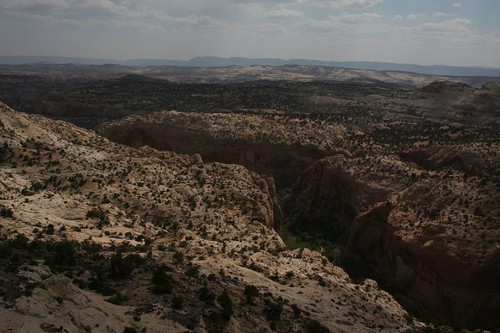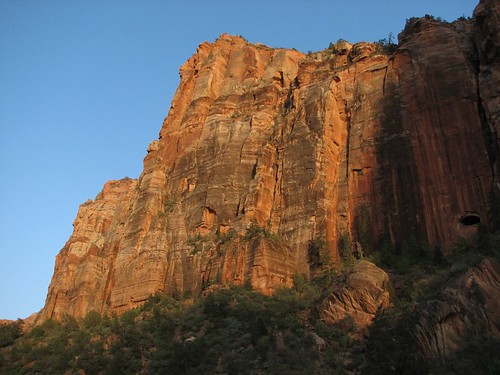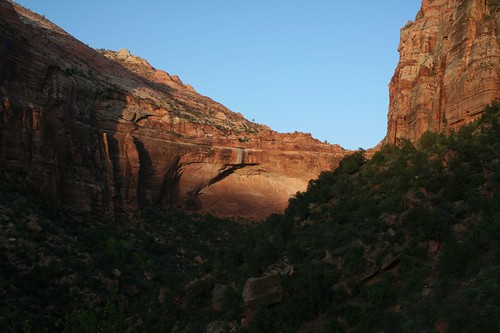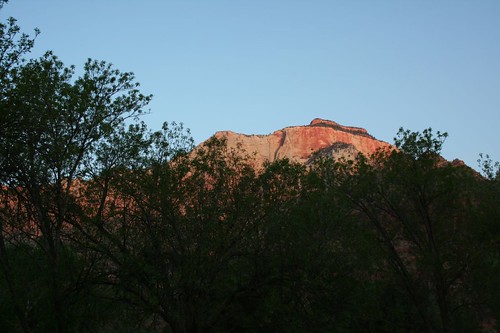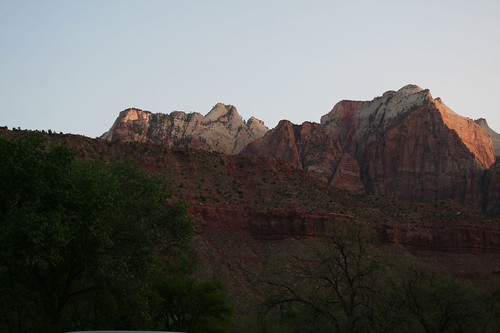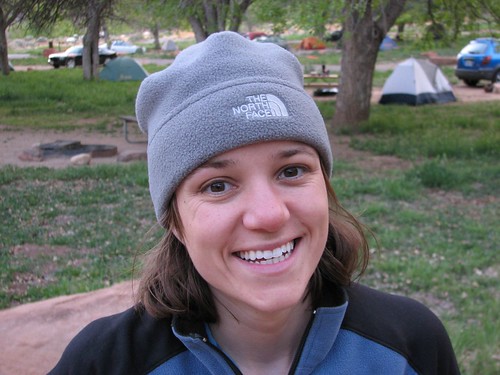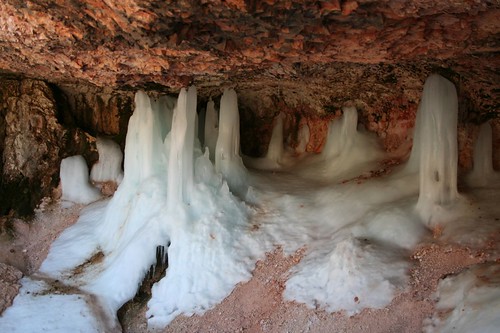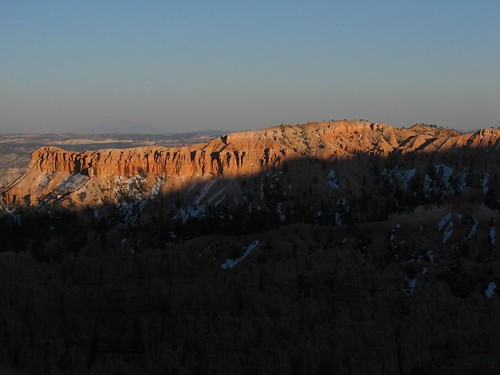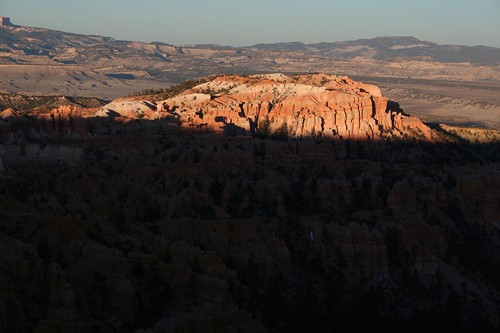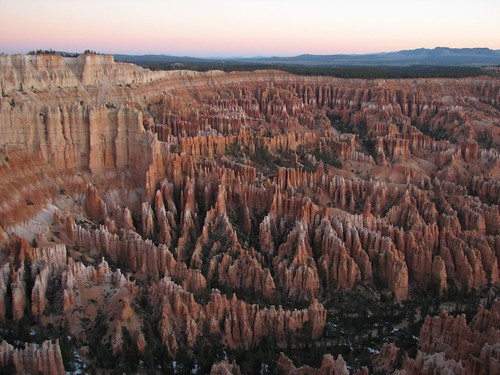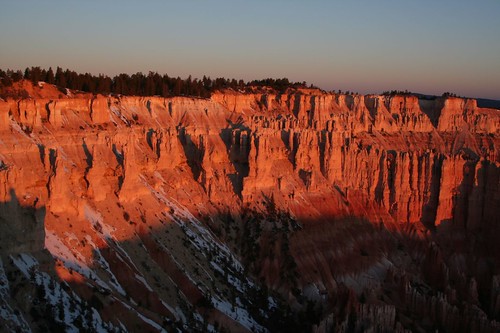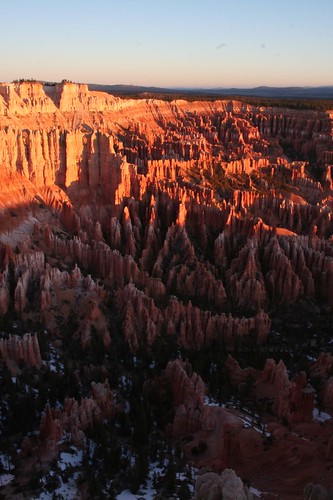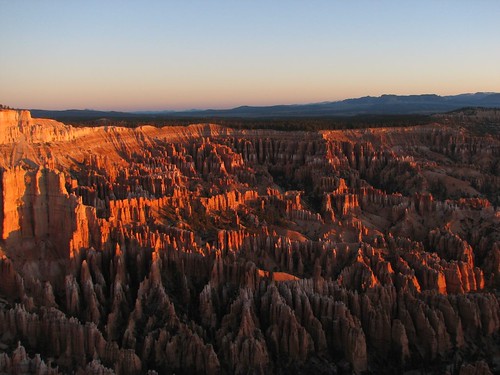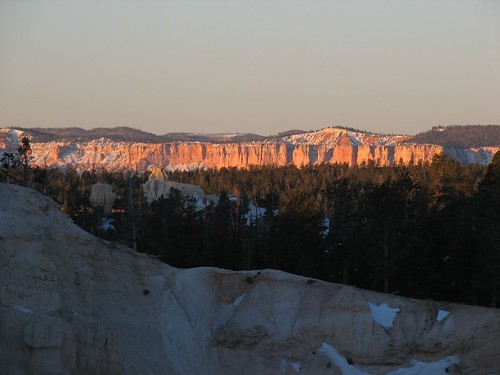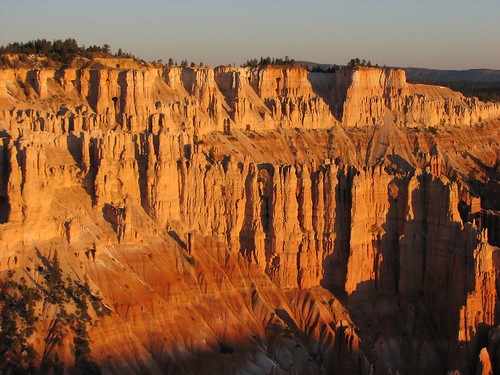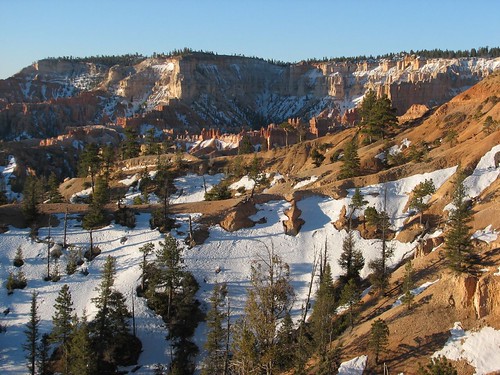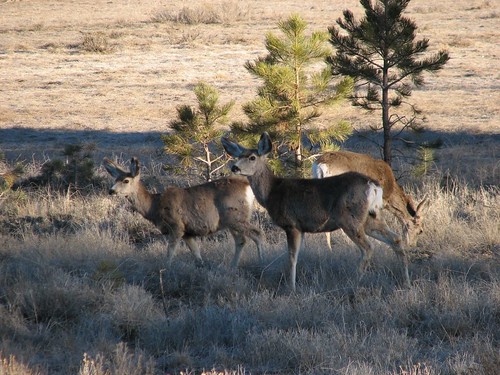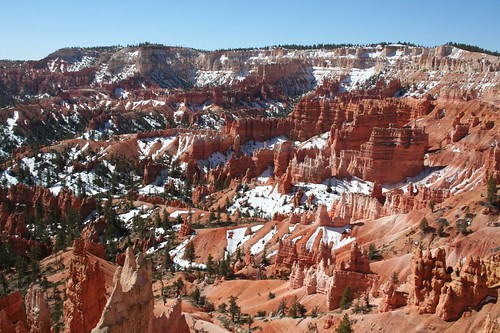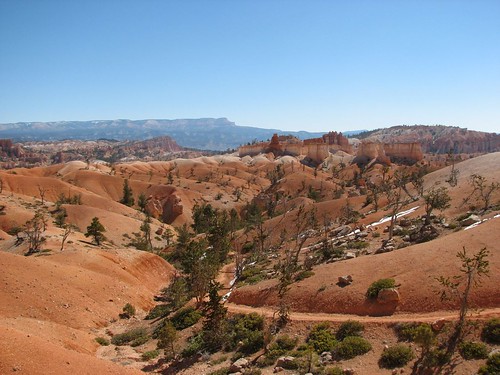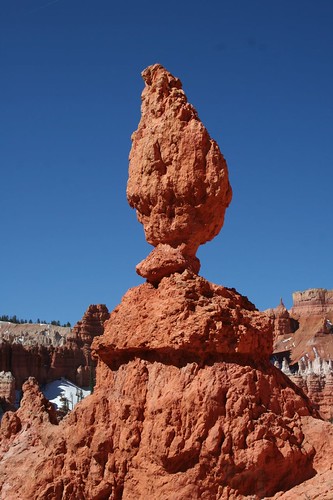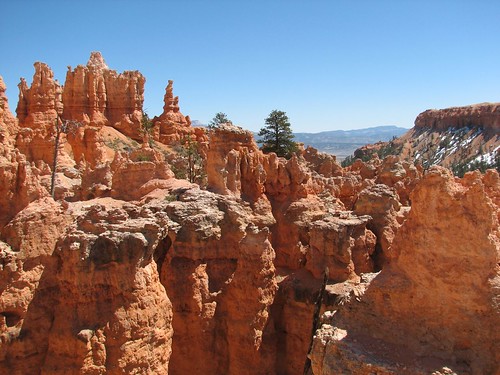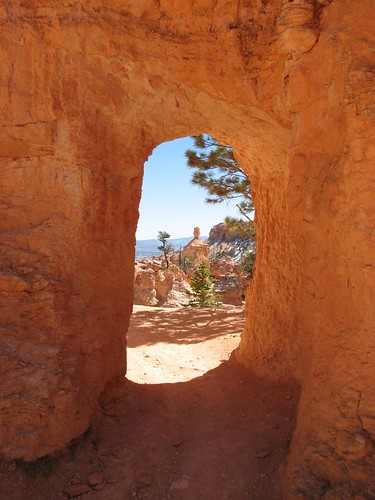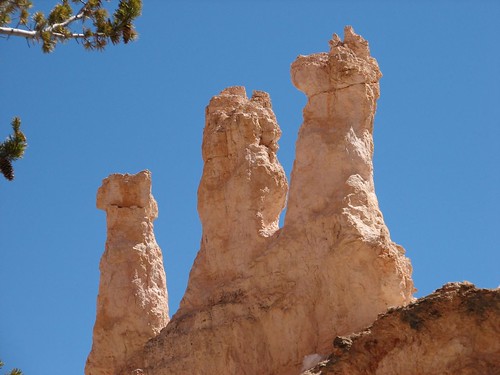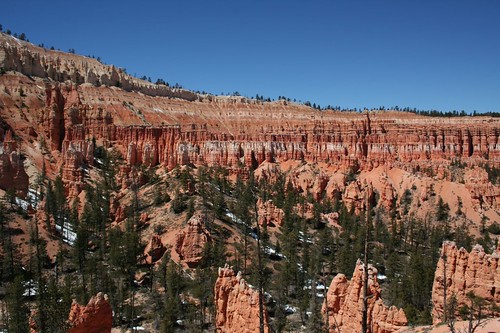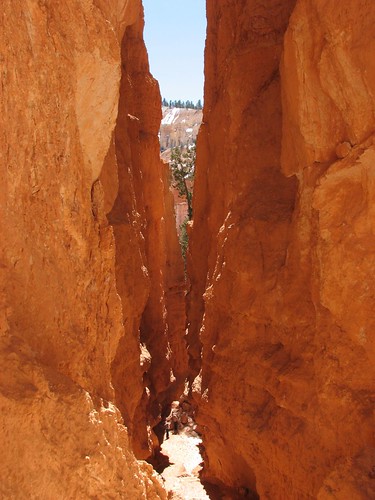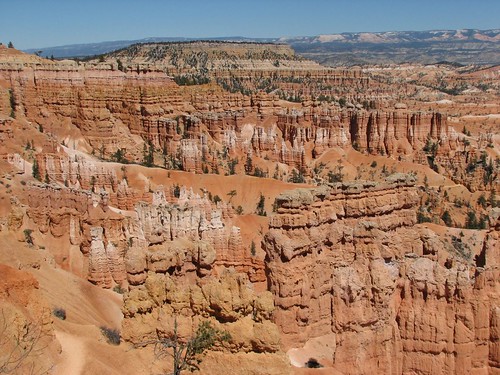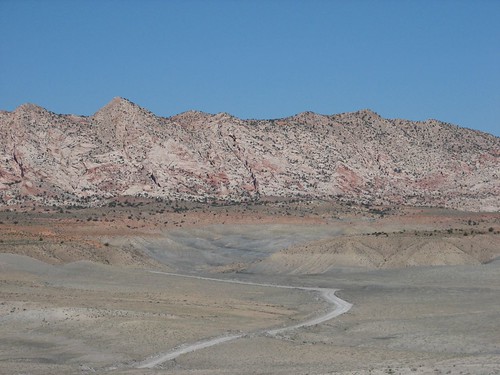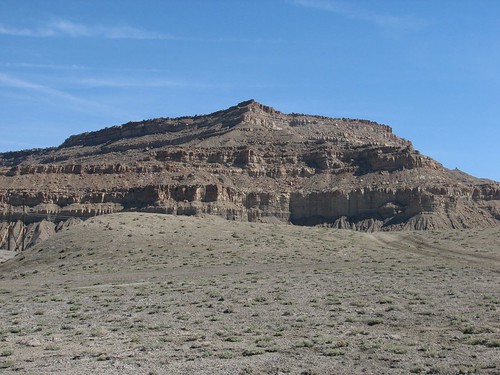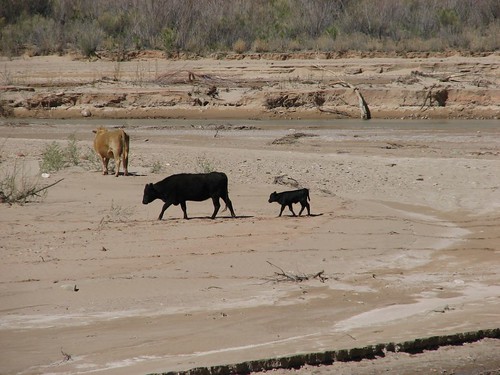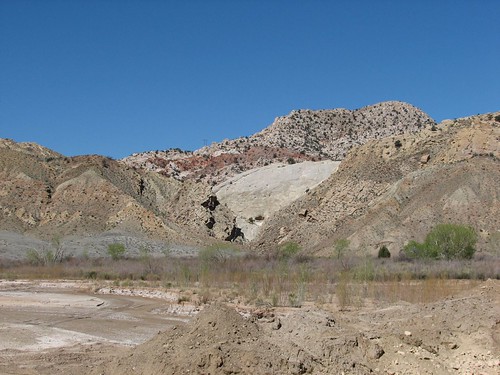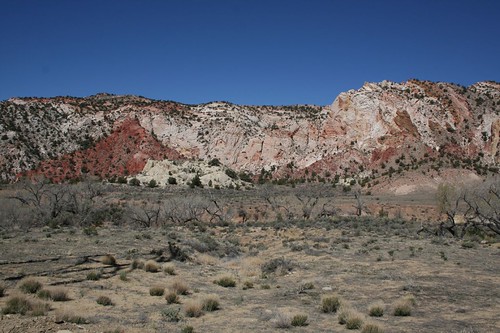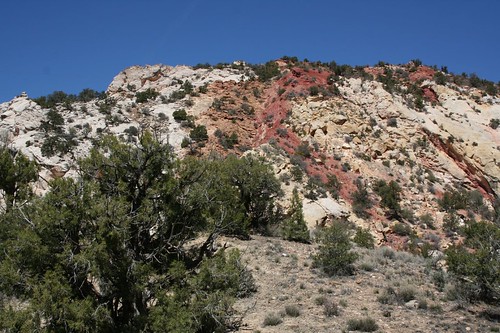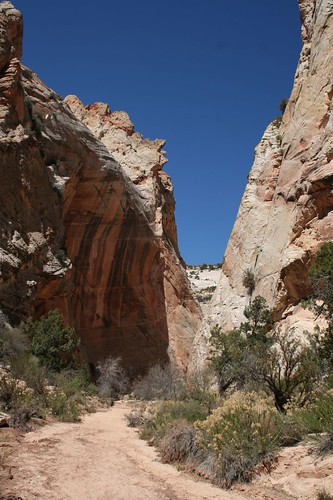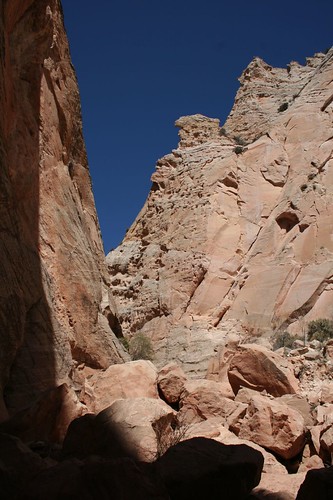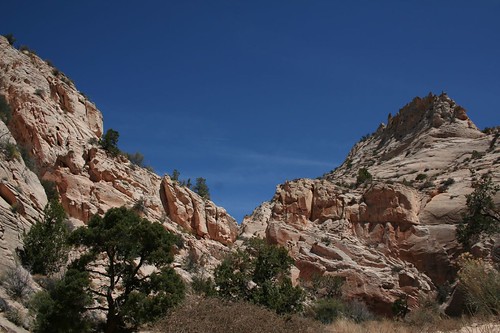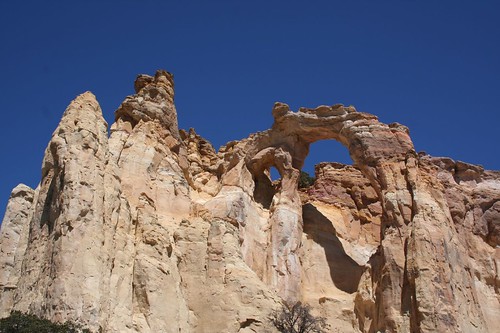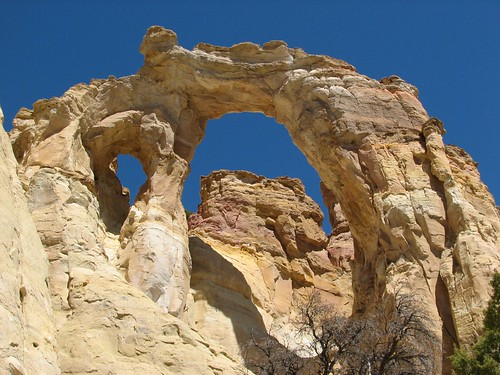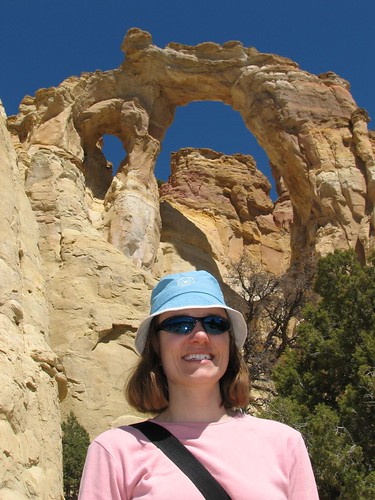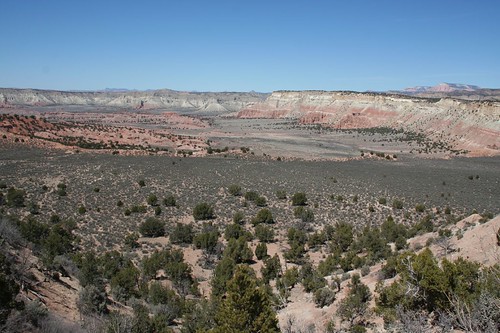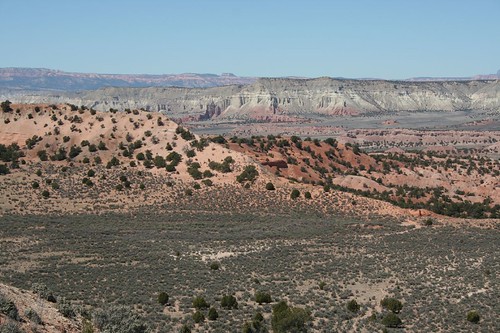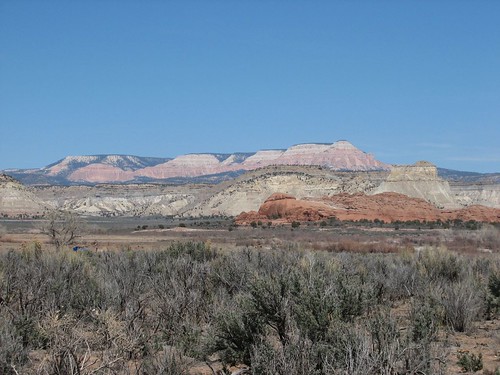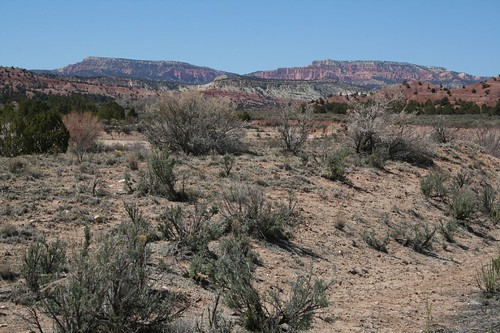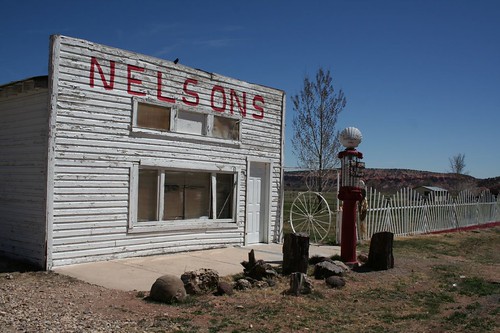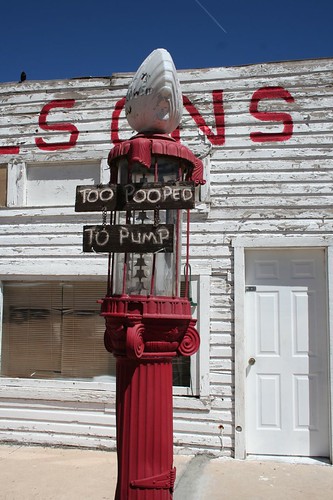We arrived at the Boulder Outdoor Survival School (BOSS) around 5:30 on Sunday for our Wilderness First Responder (WFR) course, which started the next day. We found a couple of yurts and a trailer in front of a large swath of desert sand covered in cactus. We checked out one of the yurts, but no one was home. Then we saw signs of life in the trailer, so we introduced ourselves to two guys who were unloading a bunch of stuff into the trailer. One guy had a ZZ Top beard, and I don’t think either was wearing shoes. Apparently, they both worked at BOSS and were both taking our class. They told us where we could set up our tent, and asked us to wait a few minutes, since their vehicle was blocking the road to the camping area.
When they moved, we drove back on the sand, finding that a bunch of people had already set their tents up. We found a patch of sand that was a respectful distance from anyone else and started setting up. The only real problem was that the outhouse was a long ways away, back by the first yurt that we’d stopped at. Brian wasn’t too excited about having to wander over there in the middle of the night, especially with his Glen Canyon navigational debacle still fresh in his mind. Overall, his impression was that we were staying in Hippie Hollow – what had we gotten ourselves into?
A few of the folks staying in nearby tents introduced themselves; all were enrolled in the WFR course with us. One of the two guys that we’d met initially came by, and Brian mentioned his concern about the distance to the outhouse. The other guy said that “small ones” are fine in the sand, but “big ones” go in the outhouse. Brian wasn’t exactly sure what he meant, but he assumed this was a sanction to pee in the sand, and was grateful.
The class started the next day. The two instructors were from the Wilderness Medicine Institute (WMI) and both seemed really good. Class would run from 8 to 5 every day, except for two nights when it would go until 10 one night and whenever we finished the other night – possibly midnight, possibly 2 AM. We also got a textbook with assigned reading for each night – it sounded like we’d be busy!
The first day of class, we learned the patient assessment system, a tried-and-true methodical system for diagnosing and treating a patient in the wilderness. It all seemed quite well-thought-out, except that the first step is to immobilize the spine by taking firm hold of the patient’s head. If you didn’t see the patient’s injury, you must always suspect a method of injury (MOI) for spinal injury. In other words, you can’t quite be sure that the patient didn’t fall from a 40-foot cliff, even if you found him in the middle of an open field and he says he just has a splinter. So you have to keep firmly grasping his head until definitive care arrives. (Later, we learned how to determine that we could release spine immobilization. But the first step on a splinter patient is still to grab firm hold of that head – we just learned the criteria for eventually letting go.)
The second day of class, we learned CPR. The hardest part about CPR is getting the rhythm right – you want 100 chest compressions per minute, no more and no less. The instructors clued us in on how to do it right. Just let the song “Another One Bites the Dust” run through your head while you do the chest compressions – the song has about 100 beats per minute. We were kind of disturbed, but we sang “Another One Bites the Dust” to ourselves as we tried to save our CPR dummy’s life, and it worked.
The wind howled through our tent each of the first two nights, depositing a layer of sand on everything. On the second day of class, though, the wind really picked up. One guy went back to the camping area during the class day to check on the tents. He came back with good news – the tents looked pretty good except for two. He proceeded to tell us that all four stakes of our tent had come out and the tent had gone flying. But not to worry – the tent was pinned firm against a tree and seemed to be stable there.
This didn’t sound good, so we raced back to the camping area through the howling wind to find our tent indeed pinned against a tree. Where the stakes had gone was not obvious, but after they had given up the fight with the wind, the tent had definitely taken flight. The wind was still howling, pressing the tent against the tree, so it was all we could do to wrestle the tent out of the tree and take it apart. When we finally did, we found that the poles were bent in three places and broken in one. Our tent would not be rising again. Unhappily, we stuffed the tent back into its bag, not knowing where we’d sleep tonight.
Over the next couple of hours, we hatched a plan: We’d either sleep somewhere else at BOSS or store our stuff somewhere and sleep in the car. (Our car’s normal state is so packed that we couldn’t fit a medium-sized raccoon in the back, much less two adult bodies bundled in sleeping bags.) We talked to Jeff, the guy in charge of BOSS, and he said we could store our stuff in the yurt, which turned out to be a big shed. Then we called up REI, and the representative said that our tent shouldn’t have just flown away, so she’d send us a new tent. We’d have to pay for it, but REI would pay for overnight shipping, and the next time we made it to an REI store, we could return the tent with the broken poles. Score! REI is amazing. So, problem solved. We’d sleep in Caroline tonight and get a new tent on Thursday.
As it turns out, there were about ten of our classmates who also slept in vehicles in the parking lot that night. The wind stayed high throughout our time in Boulder, so although we got our new tent right on schedule, we never set it up, for fear that it, too, would blow away. With all of our stuff in the yurt, the back of the CR-V made for reasonably comfortable sleeping space, and it was really nice not to have the wind howling through the tent overnight and coating us in sand. Many other people decided the same thing – we had plenty of company in the BOSS parking lot overnight.
Over the course of the class, we learned all sorts of interesting things. General malaise is not only a symptom of many illnesses; General Malaise is also a South American dictator. Or so said one of our instructors, who was generally not to be believed but was very amusing. The other instructor kept prescribing a “can of toughen-up” for various illnesses and injuries that couldn’t be treated but due to low severity, didn’t require evacuation. For the rescuer, he recommended drinking a “can of calm”.
For altitude sickness, a vasodilator (something that expands the blood vessels) is helpful. Viagra would be a good choice. Apparently both male and female mountain climbers take Viagra to help them handle the altitude. I never did understand those TV commercials, where they show a man and woman in a cozy-looking house in all pastel colors, happily smiling at each other. Now I do – apparently, they just arrived home safely from a big-mountain expedition, free of altitude sickness thanks to Viagra (or Cialis, or Levitra), and they’re reflecting with satisfaction on their accomplishments.
On Saturday, we got a day off from class. Unfortunately, a lot of reading had piled up from the previous days, so we’d have to spend much of the day catching up. But we decided that we should at least do it in a beautiful place, so we headed out the Burr Trail, a paved road through Grand Staircase-Escalante National Monument that eventually leads to Capitol Reef National Park.
We spent a lot of the day parked on the sand in the national monument with a beautiful view and nobody else around. We’d driven a ways off the paved road, to the point where Sarah asked whether we could find our way back. Fortunately, we realized we could see the paved road off in the distance. We set up our camp stove and chairs, made some coffee, and got started reading. We stayed there for hours, only leaving when our nemesis, the wind, picked up and started blowing sand in our faces.
It was still pretty early and the drive was beautiful, so we kept going. Eventually, we saw a road sign that indicated we were only about 10 miles away from Capitol Reef. We hadn’t planned to drive this far, but since Capitol Reef was so close, we had to keep going. The views of uplifted pink rock were amazing.
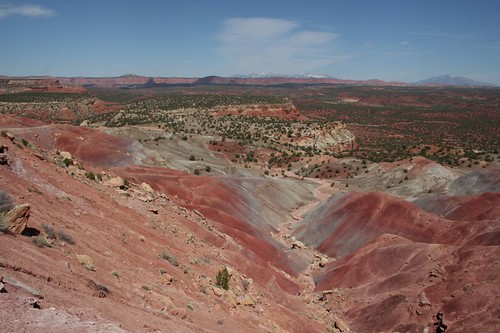
We drove a crazy steep switchbacked road down into a canyon and then took a picture looking back up:

We saw a sign for the Lower Muley Twist Canyon trailhead. Brian had read that this was supposed to be a great trail, so we decided to hike out a little ways. After about a half hour, the canyon narrowed so that it was just maybe a foot wide. That foot was filled with a gooey sludge that we didn’t really want to walk through, and besides, that pesky wind had been blowing sand in our faces, so we decided this was a good spot to turn around. We’d gotten some good pictures along the way, though.
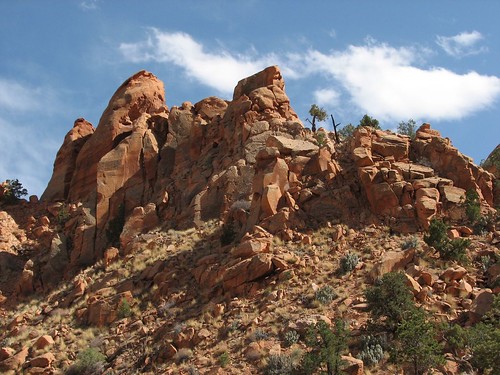
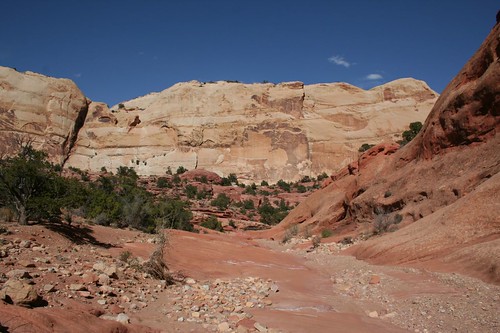
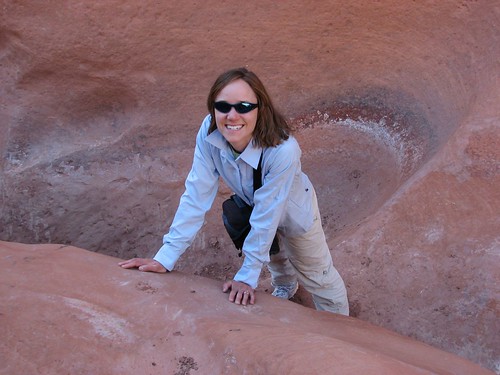
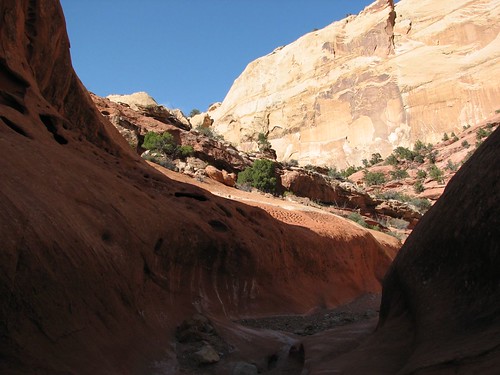
After the hike, we drove back to Boulder to do some more studying. When we returned, the moon had risen and made a pretty sight over the mesas across from our campground.
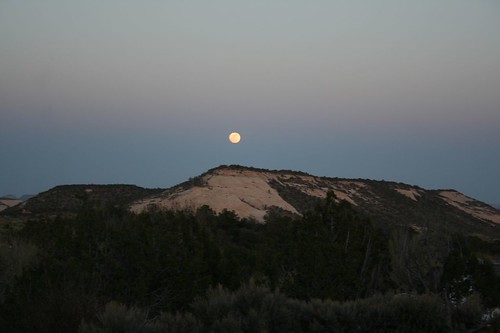
Later in the class, we learned about mass casualty incidents (MCIs). One of our instructors told us about a bus wreck with 53 patients, where he had arrived on the scene as one of only five rescuers. Five rescuers for 53 patients – not good odds. So we learned how to handle such a scene and then did a scenario.
One of the best parts of this class was the scenarios, where we got to practice what we’d learned in the classroom sessions. A subset of students would become “patients” to be “treated” by other students. The instructors came up with some crazy scenarios – a unicycling Bulgarian trapeze troop of clowns was involved in one of them – but no matter how outrageous the MOI, the resulting injuries and illnesses always served to help cement what we’d learned in class.
So in the MCI, Brian was one of the patients. He was given a dislocated shoulder – basically, half a tennis ball, stuck to his shoulder with an ACE bandage, and covered in purple moulage (the instructors’ word for their makeup kit that allowed them to simulate all manner of gruesome ailments). He sat down with the other six members of his trapeze troupe, who were all roped together – did I mention that they were climbing a mountain on their unicycles and were roped off for safety?
Then the rescuers, the other 20 students in the class, arrived on the scene to save the day. One after another came by Brian to ask his name and what was wrong, as he screamed about the excruciating pain in his shoulder. And then each went away, apparently deciding that his shoulder could wait when other patients had eyes popping out and head trauma that was causing some really strange behavior. Eventually, Brian lay down, pretending to faint from the pain. One of the instructors came by and told him to vomit and choke on his vomit, so he did. Something like 30 seconds later, one of the rescuers came by and performed chest compressions to force the inhaled vomit back up, and Brian went back to being in excruciating pain. At length, after being repeatedly abandoned and then ignored, despite his obvious pain, he wandered into the accident scene, nearly stepping on the popped-out-eye patient, and yelled even more forcefully that he needed help. The rescuer in charge decided that Brian needed to be “bounced” and sent the two burliest rescuers to swiftly dispatch him from the scene. Fortunately, one of those rescuers was not only burly but had learned a bit of WFR training, and proceeded to relocate Brian’s dislocated shoulder. Finally, his pain was relieved, so now he started looking for morphine.
Getting the opportunity to use one’s over-the-top acting skills was a lot of fun. Being the rescuer, on the other hand, was stressful. There are a lot of steps to remember, and if you forget just one step, you could miss a key injury or an allergy to a drug that you’re about to help administer.
Another highlight of the class was the food. Our tuition paid for not only the course and camping (or a spot in the parking lot, as it turned out) but also three meals a day. We were expecting typical cheap, unexciting, and likely unhealthy institutional-style food (hotdogs and baked beans anyone?). As it turned out, the food was fantastic! We got fresh-made spring rolls, homemade breads and soups, fresh-baked scones, pancakes, enchiladas, and a number of other delicacies, mostly made with natural or organic ingredients. They even had home-canned sides occasionally – including an assortment of pickled items, apple butter, and jam. What a treat not to have to think about cooking for 10 days, especially when the food was so good! We also didn’t have to wash any dishes expect our own plates and cups. We were definitely spoiled.
On the last day of class, Wednesday, April 23, we had to pass a written test by answering at least 80 of 100 multiple choice questions correctly, and also a practical exam, which was yet another scenario. Brian got a 97% on his written test, and Sarah was the instructor’s first ever 100%! In reviewing her test later, though, she found one question that she’d answered wrong that the instructor had failed to mark, so her score will go into the record books with an asterisk. We both passed our practical exams as well, so now we’re full-fledged WFRs (pronounced “woofer”), ready to wield our medical training like a samurai sword against anyone brave enough to get injured or sick in the wilderness when we are in the vicinity.
After receiving our WFR certification, we went to the corner gas station for some ice cream, then back to the BOSS yurt to reload our car. We took a few pictures of the cool scenery as we left town, and then we were off, heading west.
